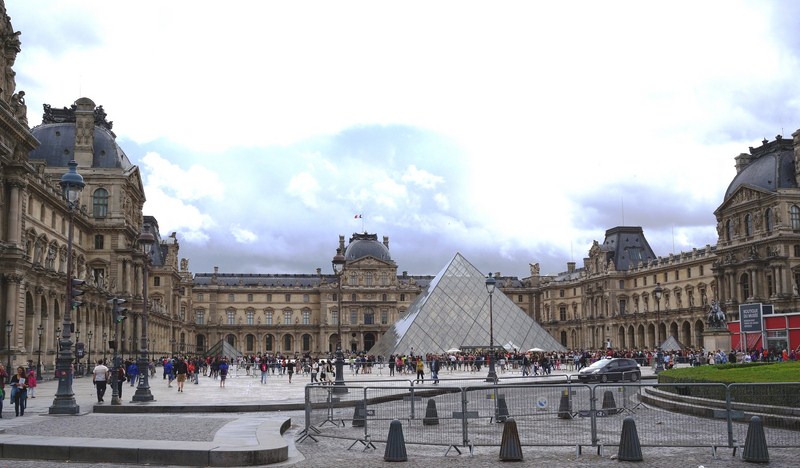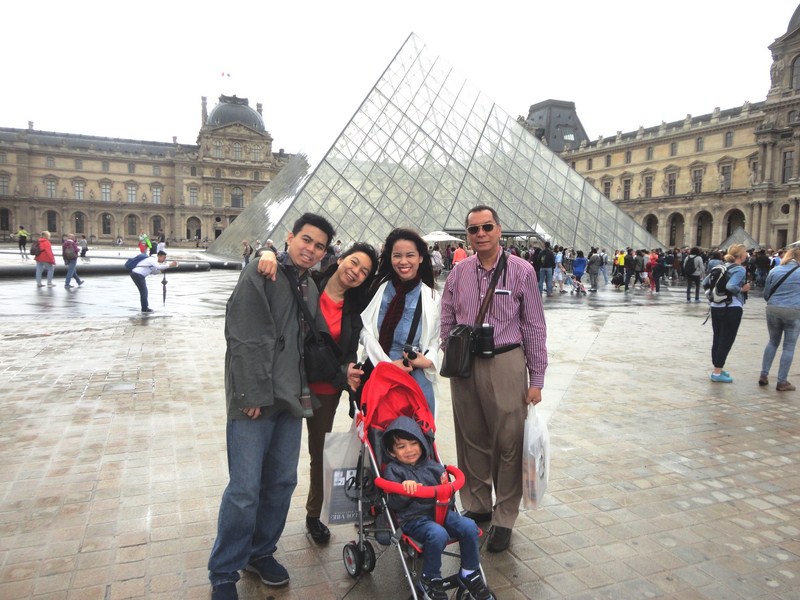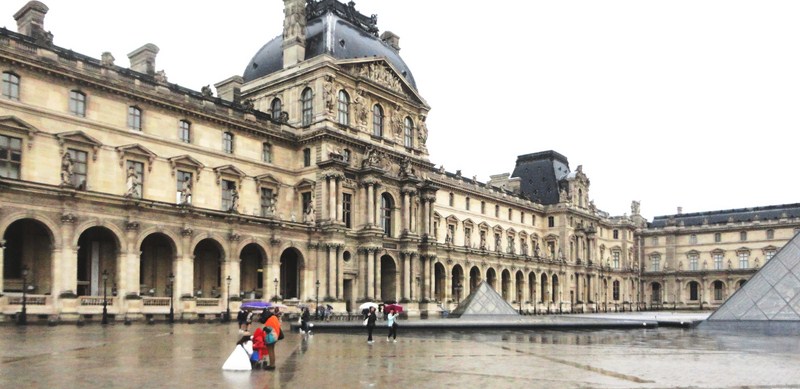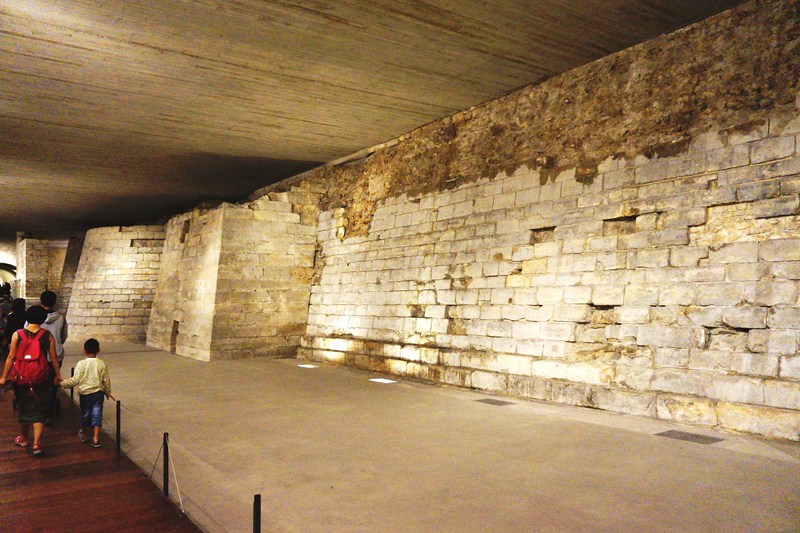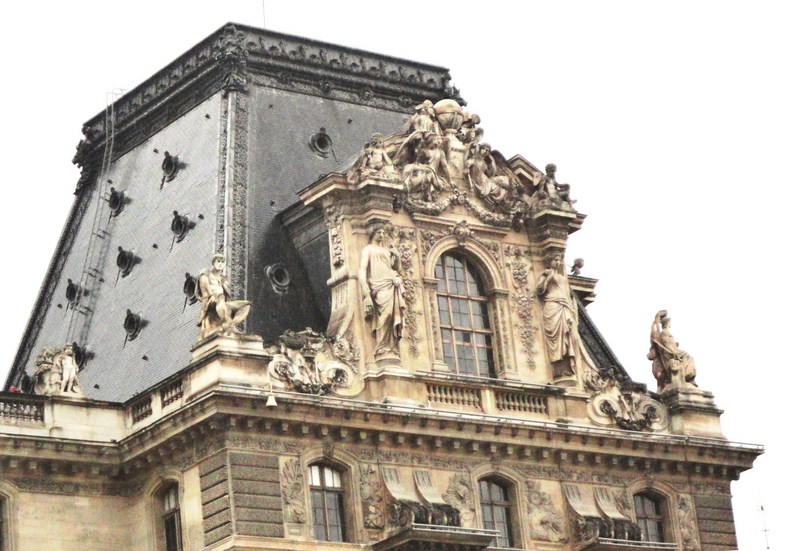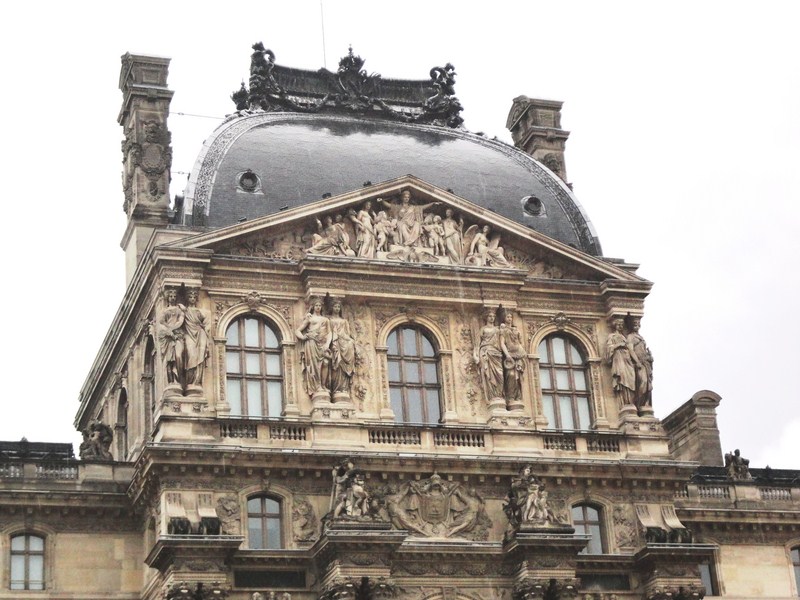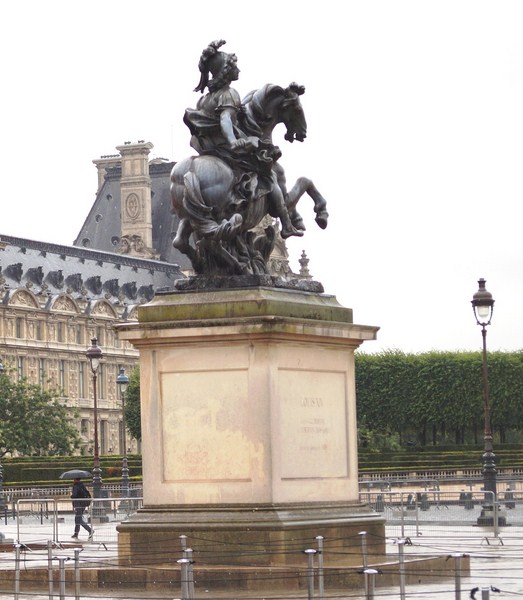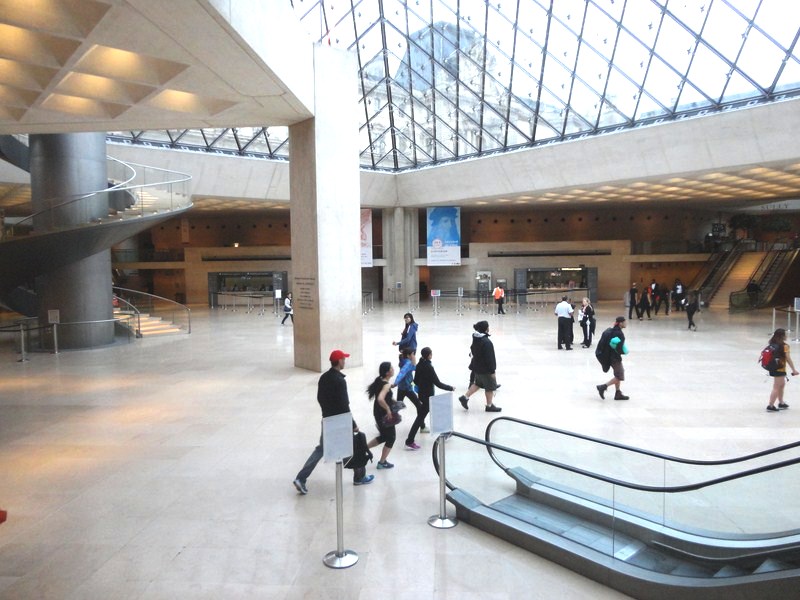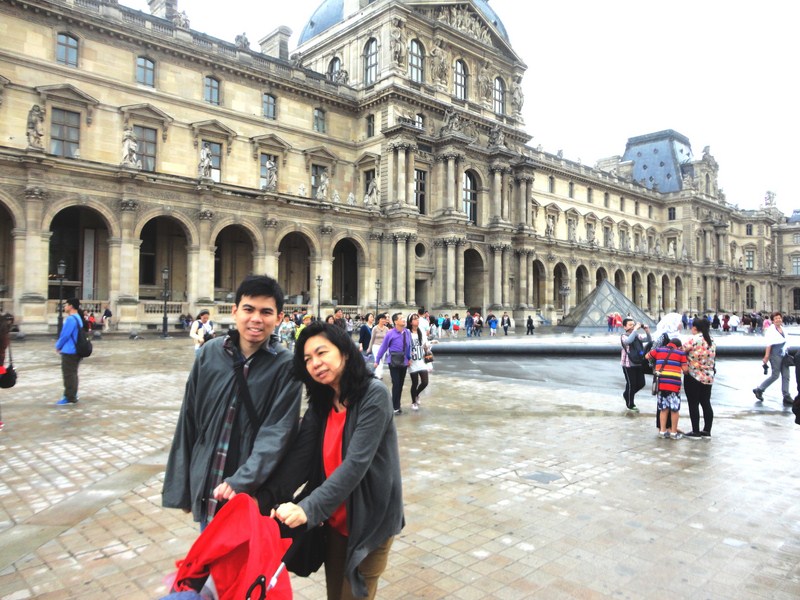Come morning of our second day in Paris, after breakfast at our hotel, we walked towards the Gare de l’Est Metro entrance where we took the Metro to the Louvre Museum (or simply the Louvre), one of the world’s largest museums and a central landmark and historic monument of the city. It was already raining when we arrived at the Louvre. Located on the Right Bank of the Seine River, in the 1st arrondissement (ward), we arrived early in the main courtyard (Cour Napoléon).
However, lines were already starting to form near the 21.6 m. (71-ft.) high Louvre Pyramid (Pyramide du Louvre), a large pyramid of glass and metal designed by the late Chinese architect Ieoh .Ming (I.M.) Pei. Its square base has sides of 35 m. (115 ft) and consists of 603 rhombus-shaped and 70 triangular glass segments. Completed in 1989, it is surrounded by three smaller pyramids. The large pyramid serves as the main entrance.
Check out “Louvre Pyramid“
The museum is housed in the Louvre Palace, originally built as a fortress in the late 12th century under Philip II. Remnants of the fortress are still visible in the crypt in the basement of the museum. Whether that spot was the first building is not known. It is possible that Philip modified an existing tower. The remains of the medieval fortress and moat have been excavated and preserved, and can be seen today on the underground level of the Sully Wing, on the way to the department of Egyptian antiquities.
Check out “Louvre Museum – Egyptian Antiquities Department”
The building was altered frequently throughout the Middle Ages and was extended many times to form the present Louvre Palace. In the 14th century, Charles V converted the building into a residence and, in 1546, Francis I renovated the site in French Renaissance style and acquired what would become the nucleus of the Louvre’s holdings (his acquisitions including Leonardo da Vinci‘s Mona Lisa).
In 1682, Louis XIV chose the Palace of Versailles as his residence and constructions slowed. However, the move permitted the Louvre to be used primarily as a place to display the royal collection, including, from 1692, a collection of ancient Greek and Roman sculpture. It was also used as a residence for artists.
In 1692, the building was occupied by the Académie des Inscriptions et Belles Lettres and the Académie Royale de Peinture et de Sculpture which, in 1699, held the first of a series of salons. The Académie remained at the Louvre for 100 years. During the French Revolution, the National Assembly decreed that the Louvre should be used as a public museum to display the nation’s masterpieces and, on August 10, 1793 (the first anniversary of the monarchy’s demise), opened with an exhibition of 537 paintings and 184 objects of art, three quarters of which were derived from the royal collections, and the remainder from confiscated émigrés and Church property (biens nationaux).
On May 1796, the museum was closed due to structural deficiencies but was reopened on July 14, 1801, arranged chronologically and with new lighting and columns. Under Napoleon I, the collection was increased with many Spanish, Austrian, Dutch, Vatican (including Laocoön and His Sons and the Apollo Belvedere)and Italian (including the Horses of Saint Mark) works seized by his armies (returned to their original owners after Napoleon’s abdication) and the museum was renamed the Musée Napoléon in 1803. During the reigns of Louis XVIII and Charles X, the collection was further increased and, during the Second French Empire, the museum gained 20,000 pieces.
With an area of over 60,600 sq. m. (652,300 sq. ft.), the Louvre exhibits a collection of nearly 35,000 objects, from prehistory to the 21st century, divided among 8 curatorial departments – Egyptian Antiquities; Near Eastern Antiquities; Greek, Etruscan, and Roman Antiquities; Islamic Art; Sculpture; Decorative Arts; Paintings; Prints and Drawings. You can’t possibly see them all, so you have to navigate to see what you want to see in the world’s most visited museum (the Louvre received over 9.7 million visitors in 2012). Since the Third Republic, its holdings have grown steadily through donations and bequests.
Check out “Louvre Museum – Painting Collection” and “Louvre Museum – Greek, Etruscan and Roman Department”
Louvre Museum: 75001 Paris, France. Tel: +33 1 40 20 50 50. Open daily, except Tuesdays and holidays, 9 AM- 6 PM (until 10 PM on Wednesday and Friday evenings).
The Louvre has three entrances: the main entrance at the pyramid, an entrance from the Carrousel du Louvre underground shopping mall, and an entrance at the Porte des Lions (near the western end of the Denon wing).
Admission is free, from October to March, on the first Sunday of every month. Still and video photography is permitted for private, noncommercial use only in the galleries housing the permanent collection.The use of flash or other means of artificial lighting is prohibited. Photography and filming are not permitted in the temporary exhibition galleries.
How To Get There: the Louvre can be reached via Metro lines 1 and 7, station Palais Royal – Musée du Louvre Métro or the Louvre-Rivoli stations. By bus, take No. 21, 24, 27, 39, 48, 68, 69, 72, 81, 95 as well as the touristic Paris l’Open Tour. By car, there is an underground parking reachable by Avenue du Général Lemonier, every day from 7 AM – 11 PM.

